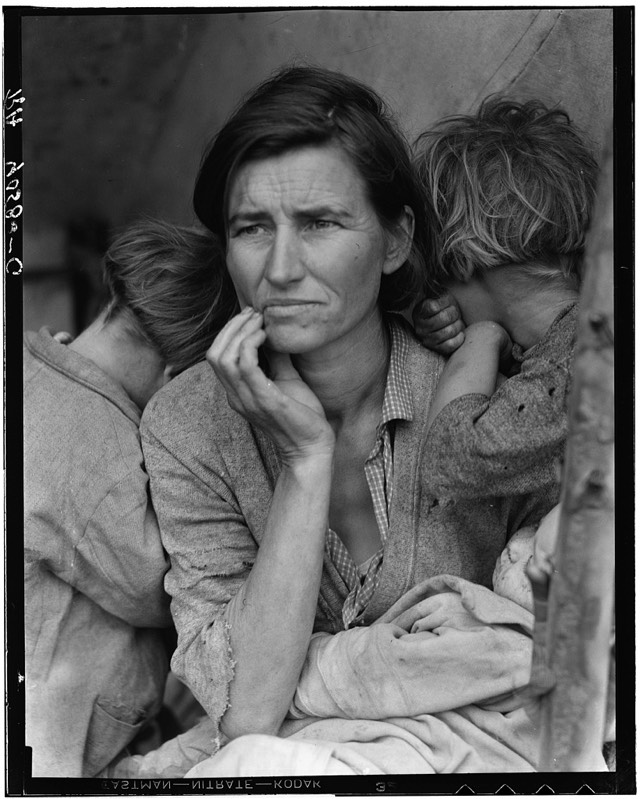
The painting showed the country folk as the artist saw them (he grew up there) instead of using them as actors to act out grand historical narratives. It was a glimpse into life outside the city in a time of growing urbanization.
One of Courbet's followers, Jean-François Millet, took up the movement in the painting The Gleaners, which depicts three women gleaning. Gleaning was the the taking of crops left behind after a harvest on a commercial farmland. Depicted is the stark reality that all that some people have is the opportunity (if you can call it that) to pick like scavengers over an already harvested farmland. Millet attempts to show how hard and oppressive life is for many of France's people and is one of the first to do so.

Social realism was picked up in America in the time of the Great Depression. This new social realism included both photography and painting and is typified by the photo Migrant Mother, by photographer Dorothea Lange. The photo came to represent the Great Depression in the minds of Americans even to this day.

Social realism works to inform people and change people through strong, emotional images of real people and the struggles of their lives. These works aren't just about power and beauty, they are about real people who struggle to live. These are informative works, as well as artistic. I think social realism informs a lot of art for social change, and while it is from a bygone era, there is still a lot we can learn from these artists and their works.

No comments:
Post a Comment